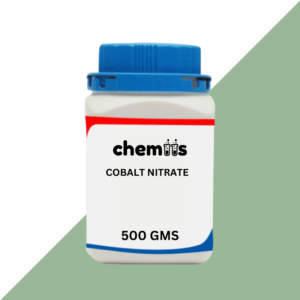Chromium Nitrate is a highly reactive, water-soluble chromium compound commonly used in various industrial applications. It is primarily recognized for its role in electroplating, pigments, and catalysis. Chromium Nitrate is known for its deep red to purple color, which makes it useful in the production of various pigments, especially for ceramics and coatings. In electroplating, it serves as a key component for the deposition of chromium onto metal surfaces, providing corrosion resistance and improved durability. Additionally, Chromium Nitrate is utilized as a catalyst in several chemical processes.
Applications of Chromium Nitrate
Due to its unique properties, Chromium Nitrate is widely used across many industries. Below are its most common applications:
1. Electroplating and Surface Finishing
Chromium Nitrate is extensively used in the electroplating industry to deposit a layer of chromium onto metal surfaces. This process improves the corrosion resistance, hardness, and appearance of the substrate metal, making it ideal for use in industries such as automotive, aerospace, and manufacturing. The chromium plating not only enhances the aesthetic appeal but also extends the lifespan of components by protecting them from wear and corrosion. Chromium Nitrate is used as an electrolyte in the chroming process, where it is reduced onto the metal surface to form a protective chromium coating.
2. Pigment Production and Dyeing
One of the most important applications of Chromium Nitrate is in the production of pigments, particularly for ceramics, glass, and coatings. It is used to produce chromium-based pigments that provide vibrant, long-lasting colors. These pigments are commonly used in the manufacturing of green and blue dyes for glass, porcelain, and ceramics. Chromium Nitrate’s ability to form stable compounds with other materials makes it an essential component in the dyeing process, helping produce colors that are resistant to fading and discoloration over time.
3. Catalysis in Chemical Reactions
Chromium Nitrate is a powerful catalyst in various chemical reactions, particularly in organic chemistry. It is widely used in the production of chemicals, fertilizers, and specialty compounds. Chromium Nitrate plays a critical role in promoting reactions that involve the transformation of organic compounds. Its catalytic properties are utilized in industrial processes such as the production of chemicals for the automotive, agriculture, and pharmaceutical industries. Chromium Nitrate facilitates the breakdown and synthesis of complex molecules, improving reaction rates and efficiency.
4. Wood Preservation and Leather Tanning
In the leather and wood industries, Chromium Nitrate is used in tanning processes. It helps create durable and water-resistant leather, which is commonly used in the manufacturing of garments, furniture, and other leather goods. The tanning process involves the application of chromium salts, such as Chromium Nitrate, to bind the collagen fibers in the leather, making them more flexible and resistant to decay. Chromium Nitrate also helps in the preservation of wood by providing enhanced resistance to moisture, fungi, and insects, making it valuable for use in furniture and building materials.
5. Research and Analytical Applications
Chromium Nitrate is also widely used in research laboratories for various chemical and analytical applications. It is used as a reagent in inorganic chemistry and for synthesizing other chromium compounds. In analytical chemistry, it is used in qualitative analysis and as a catalyst for certain reactions. Laboratories rely on Chromium Nitrate to create standard solutions and as a precursor for preparing other chromium-based reagents used in research and experiments. Its use in research spans a wide range of fields, including materials science, chemistry, and environmental studies.








Divya Raut (verified owner) –
Will recommend to others.
Zoya Merchant (verified owner) –
Reliable supplier.
Bhavika Shah (verified owner) –
Professional service.
Rupal Vyas (verified owner) –
No complaints at all.
Manju Devi (verified owner) –
Impressed with the service.
Aarav Mehta (verified owner) –
Just what I needed.
Bhavana Rao (verified owner) –
Crystal clear instructions.
Ishaan Nayak (verified owner) –
No complaints at all.
Devansh Kulkarni (verified owner) –
Delivered in good condition.
Kusum Kumari (verified owner) –
Very convenient service.